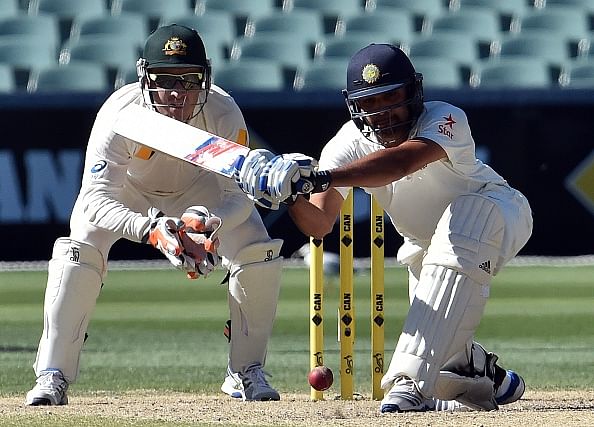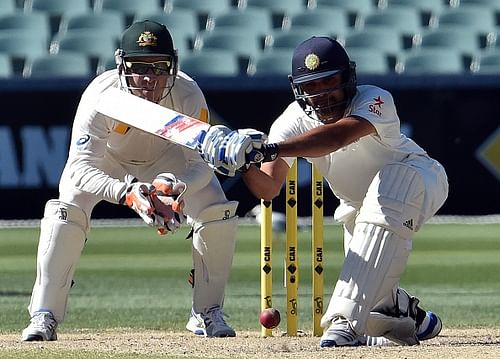
Clock ticking for Rohit Sharma: What good is talent if it can't deliver?

The young, magnificently talented Rohit Sharma is taking guard. Lazy elegance. Jeez, what talent, what timing! What a shot, pure class. Oh no, he’s given it away.
Rohit Sharma comes to bat, Rohit Sharma enthralls the crowd. He cuts and drives from every length. He pulls a half-volley for four. He finds the gap, cutting the field like a pair of scissors in a tailor’s hands. Bowlers are wary, you never know with Rohit. And then, he is gone.
Rohit Sharma has been one of the biggest soap operas of Indian cricket: long-running, entertaining and a super hit. Open Twitter and you can compile a joke book and a stat book out of his cricketing career: the jokes amuse, but the stats don’t.
Since making those breathtaking centuries in his first two Test innings, Rohit has lost his way – 14, 6, 0, 25, 72, 19, 0, 31*, 28, 6, 43, 6. This translates to 250 runs in 12 innings at an average of 23. Is this the definition of talent?
The drives are elegant, the timing superb, and the aesthetics can recreate renaissance, but what about the countless games he is losing for India? Can prolific form in another format allow you to hold on to your place? If so, why isn’t that some others aren’t getting the same privilege?
For long, India’s obsession with talent has led to the destruction of some deserving players. Back in the 90s, people obsessed about Vinod Kambli till his temperament got sorted out. And this obsession has returned to haunt India again. One doesn’t need to look too far back to exemplify Rohit’s lacklustre approach to batting, as the just concluded Test in Adelaide and the one India lost in Southampton, earlier this year, will suffice.
At Southampton, just when India seemed to be rebuilding after a shaky period, Rohit danced down the track to attack Moeen Ali – only to be caught at mid-off. In Adelaide, with the ball gripping and ripping off Nathan Lyon’s bowling, he planted his foot a far distance away from the pitch of the ball and allowed the ball to turn; kissing his bat on the way through, the ball landed in the fielder’s hands. Rohit walked off, leaving a valiant Virat Kohli high and dry. In the first innings of the same Test, just when a lead looked possible, he played a delivery on the up, not reaching out to it fully, straight towards mid on – only for the bowler to latch onto a fine catch.
These instances are far too many to be describing each one of them; they include two ducks and nine dismissals between 0-30. He has seldom crossed 20, giving away his wicket even before he gets settled. The implications are severe. In crunch scenarios, it is equivalent to letting your team down and not fulfilling the role that has been assigned to you.
The No. 6 position is a crucial one and is deserving of someone who can rotate the strike and bat with the tail, an a la VVS Laxman. Tense chases are closed with the help of this position and impending follow-ons are saved. How long will Rohit continue to exasperate fans across India?
It’s extremely fallacious to justify his Test performances by citing his 264 in Kolkata or his recent exploits in ODIs on flat batting decks in India, which I am sure that many will be doing right now. But let’s remember that all those ODI innings of his came after prolonged periods of constant backing by the captain, at times at the cost of the careers of other players. Can similar methods be adopted in Test cricket where countless promising youngsters are waiting in the wings? Is it fair to give a long rope to one and not to the other?
The truth remains that no major Test playing country would hand out such a long rope to a talent that can’t translate itself to performance. It is time that India adopts the same and sends out a message of meritocracy and fairness to all out there. For once, let’s move on from potential and reward those who deliver.